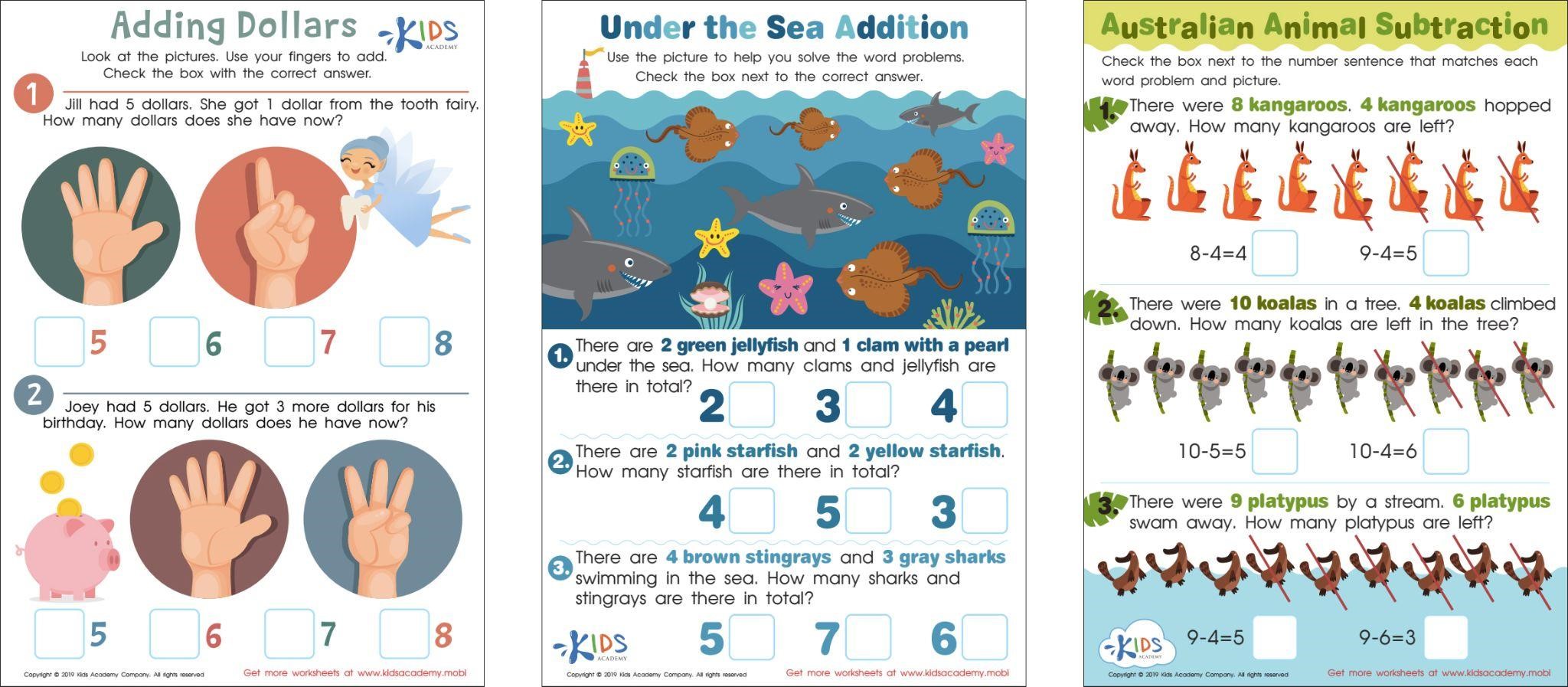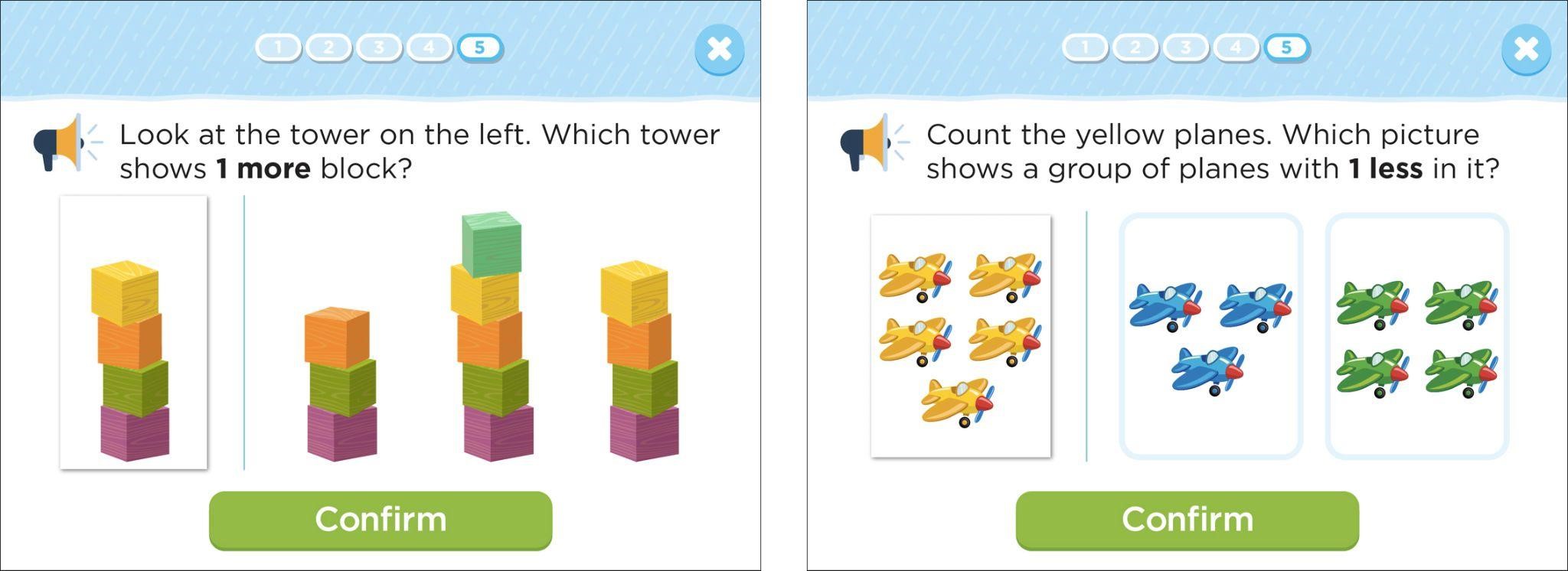Learning Addition and Subtraction with Kids Academy
March 7, 2022
Meet Anna.
Anna is 8 years old and has the confidence and competence of a Math whiz. She is very flexible with numbers; she can readily shuffle numbers about in her head and on paper.
You might think Anna is a genius of some kind, and she might be. But the truth is that Anna’s comfort with math didn’t happen by magic. It is the result of careful and deliberate nurturing.
Your child can have this same comfort with math.
With an early start and consistent effort over time, your child can be a confident and capable mathematician.
At each grade level, there are certain benchmarks that your child will be expected to meet. If you know what these are, you can be more involved in your child’s learning and provide the tools and opportunities to ensure their success.
It’s like any other aspect of development. There are certain milestones that you check to see if your child is meeting. At six months or so, they begin eating solid foods. At two years old, they should be saying two words and three word phrases. Somewhere between 8 and 18 months, they will take their first steps.
Similar milestones, or benchmarks, exist for math. Since children develop at different paces, there is no hard and fast timeline on these.
At a point, your child should be counting. They should be able to compare portions, this is bigger, this is more, that kind of thing.
Read on to find out more about benchmarks and learning apps for kids that can help you achieve each one.
Pre-K
Your pre-schooler can learn a lot of Math while doing everyday activities. Purposeful interactions will help learning take place. For instance, if you’re walking up a flight of stairs, count them one by one with your preschooler. Putting away toys? Count them one by one.
Eating grapes? Count backwards as you eat the grapes - “there were four grapes, now they’re only three!”
At this stage, a key benchmark is for your pre-schooler to learn the concepts of one more and one less. If you have three grapes, and she has three, you can ask “who has more grapes”? Take it a step further, say “look, I have one more grape than you do!”.
Complement these purposeful interactions with the Kids Academy math learning app. Find hundreds of available activities, story problems, videos, worsksheets and quizzes like these ones:
Grade K
Your kindergartner has likely begun to demonstrate some behaviors that are essential for learning math. They might be making observations like “this bag is really heavy”, or, “that’s a lot of apples!” Your child might begin to make comparisons such as “I’m taller than my baby brother”.
If they’re not there yet, not to worry. Here are some tips for building these behaviors.
Ask questions like “who is taller?” “How many fingers do you have?” Pretty soon, your child will be asking similar questions too.
Have them help to put away toys and sort objects. These activities will help them learn to manipulate objects, see patterns, solve problems. These are all important behaviors for understanding math concepts like adding and subtracting.
In kindergarten, a key benchmark is adding and subtracting numbers up to ten, as in the video below.
Story problems and number sentences help children make sense of numbers and operations within a context. Numbers have meaning and make more sense in a context. Kids Academy offers learning worksheets depicting a variety of situations that help your child learn other things while learning math.

Something else you should be doing with your kindergartner is stepping up their counting game! Move on from counting by one, to counting by 2s, 5s and 10s. Now, when you’re walking up a flight of stairs, instead of counting 1, 2, 3, only say the even numbers.
Count coins with your child. You can get in some practice of skip counting by 5 and 10 using nickels and dimes. Just be sure your child already understands that one nickel is 5 cents and one dime is 10 cents. Alternatively, group pennies in 5s and 10s to help with skip counting.
Some toys for this age group come with groups of 5s and tens. An abacus pops to mind.
It can be hard to create learning opportunities like these during the regular routine of the day. Kids Academy has tons of videos and activities designed to help your child master counting by 2, 5, and 10s as well as other skills.
Grade 1
In grade 1, a key benchmark is mastering fact families.
When children understand, relate and connect numbers, they become more flexible as they use and think about numbers.
Mastering fact families is a huge step in developing this flexibility. They will be able to take numbers apart and put them together again. When they’ve really got it down pat, this is quick mental math for them.
Take the fact family 2, 3, 5 for example.
2 + 3 = 5
3 + 2 = 5
5 − 3 = 2
5 − 2 = 3
Your child gets to see that there is a relationship between adding and subtracting, an understanding that is a cornerstone to many other things they will learn in math. The video below is an example of how well-paced and age-appropriate Kids Academy videos are.
Once your child has mastered fact families, they can move on to other benchmarks like addition with base ten blocks.
Grade 2
Remember fact families benchmark from grade 1? Turns out we’ll build on that in grade 2 with unknown parts and number bonds. Understanding the relationship between adding and subtracting is already becoming handy.
Since your child mastered facts like 2 + 3 = 5 and 5 − 3 = 2 in grade 1, they can now make the connection to 42 + ? = 48. They can reason that to find the unknown part, they can solve 48 − 42. Alternatively, they can count forward from 42 until they get to 48. Bonus points for flexibility if they notice both strategies.
In grade 2, an essential benchmark is addition and subtraction within 100. Again, Kids Academy offers a variety of videos and grade 2 worksheets and games to build mastery of skills.

Grade 3
One benchmark for grade 3 is adding and subtracting 3-digit numbers without and with regrouping, here is an example quiz:

Another benchmark is using place value to add. Here is a video that breaks down the steps for using place value to add.
Having a sense of what the benchmarks are for each grade level makes it much easier to support your child at home. No groping in the dark here; instead, purposeful interactions with your child.
Kids Academy gives you first-rate tools to help you in your quest to help your child be the best they can be. There’s nothing magical about achieving potential, just careful and deliberate nurturing.
Kids Academy: Talented and Gifted is a comprehensive learning app for kids from 2 to 10 years old. It offers several modes of learning — through collections of activities in the Adventure Land or through the structured curricula specific to each subject and grade level. Playfully, kids can perfect their knowledge of math, English, science, and social studies, as well as practice chess and explore their creativity with the arts and crafts course. Kids Academy also has several other fun kids apps worth checking out.















